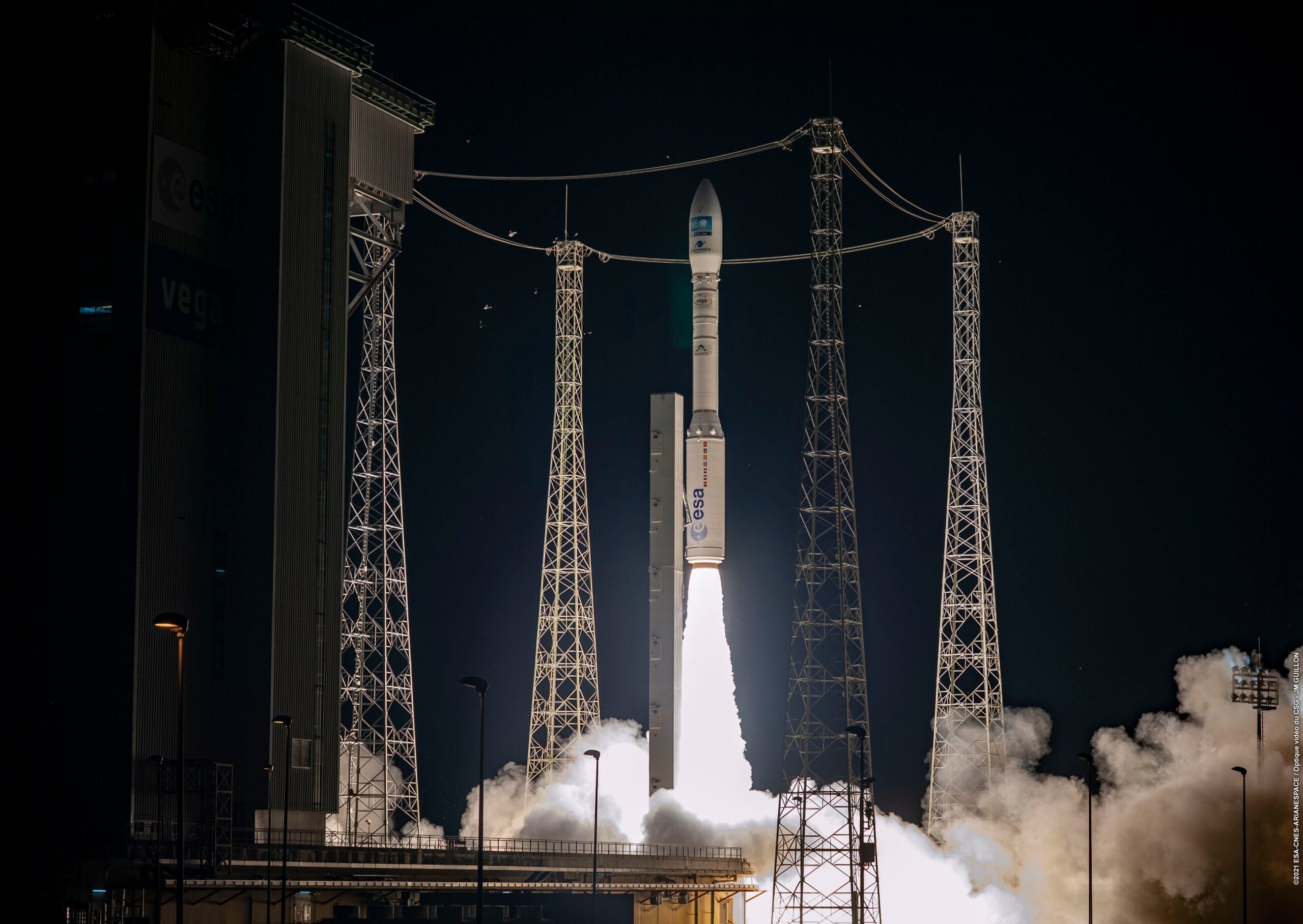TAMPA, Fla. — Pléiades Neo 4, the second of four planned high-resolution images satellites built and operated by Airbus Defense and Space, entered service Dec. 15 free from an issue that prompted an insurance claim for Pléiades Neo 3.
Francois Lombard, Airbus Defense and Space head of intelligence, told SpaceNews that Pléiades Neo 4 “is fullfilling all expected performance specifications” as it begins commercial operations four months after its mid-August launch aboard a Vega rocket.
Pléiades Neo 3, the first of four 30-centimeter-resolution imaging satellites Airbus plans to have in orbit by mid-2022, entered commercial service in early November, some six months after its launch aboard another Vega rocket.
However, an equipment issue onboard Pléiades Neo 3 prompted Airbus to file a partial insurance claim soon after the satellite’s late April launch, according to an industry source.
Airbus has not disclosed details of Pléiades Neo 3’s problem and Lombard declined to comment on the company’s insurance claim. However, Lombard said the problem, which he would only describe as an “equipment issue,” has not affected the satellite’s ability to meet customer commitments.
“It hasn’t impacted service [enabling the company to] respect all our service agreements and commitments,” he said, adding that “there are some marginal effects that we could manage” within the wider four-satellite constellation.
Airbus Defense and Space has signed more than $500 million in imagery orders to date for the constellation, according to Lombard.
The company announced Dec. 15 that PASCO Corporation, a Japanese geospatial solutions provider, signed a distribution agreement with the constellation for services in Japan.
Microsoft also recently partnered with Airbus Defense and Space on the constellation to give customers of Azure Maps, Microsoft’s geospatial services platform, access to the high-resolution satellite imagery and elevation data.
About 95% of orders are outside of the “home countries” where Airbus has an established presence, according to Lombard.
Airbus Defence and Space said Pléiades Neo 4 has successfully doubled the coverage its 30-centimeter native resolution constellation provides to around one million square kilometers a day.
The final two satellites in the constellation are currently in qualification tests ahead of their launch on an upgraded Vega C next year, Lombard said.
The four Pléiades Neo are identical to each other apart from the laser links that will be fitted onto the two coming next year, enabling the constellation to increase data transmission speeds for ordering and downloading imagery.
Airbus Defence and Space says the full constellation will be able to cover the entire Earth landmass five times per year, supplemented by synthetic-aperture radar (SAR) and lower resolution optical spacecraft that the company also operates.
Before Pléiades Neo became operational, the company says only U.S.-based Maxar Technologies had been offering commercial customers 30-centimeter resolution imaging with its WorldView constellation.
